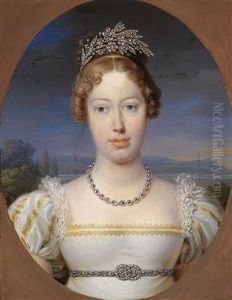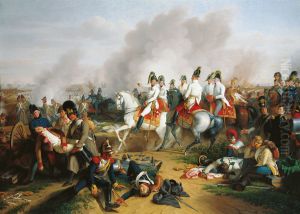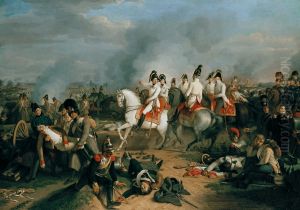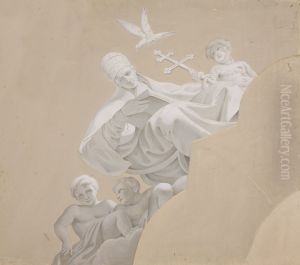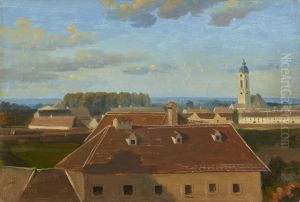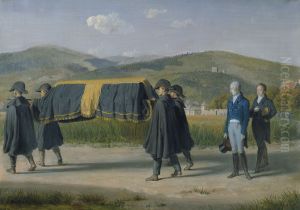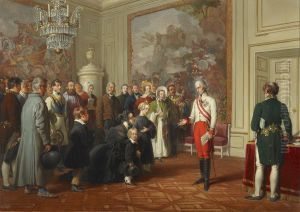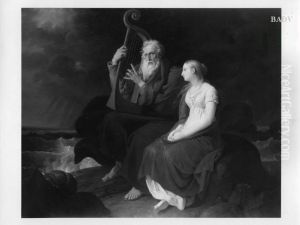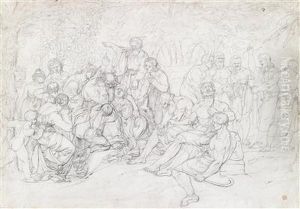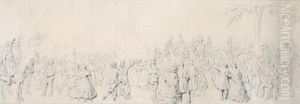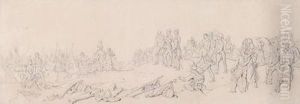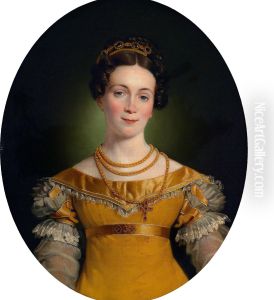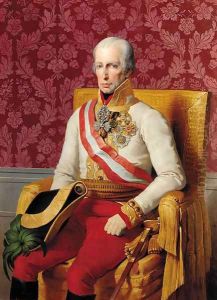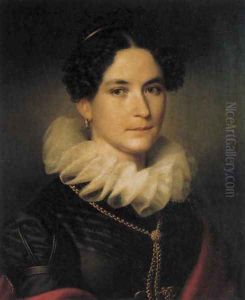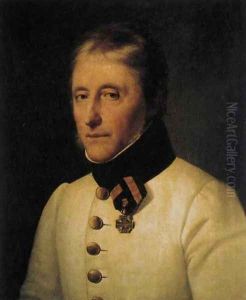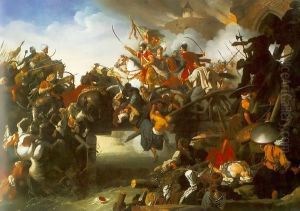Johann Peter Krafft Paintings
Johann Peter Krafft was a painter born on September 15, 1780, in Hanau, Germany, who made a significant mark in the world of art in the 19th century. He moved to Vienna, Austria, at a young age, where he would spend much of his life and career. Krafft's initial art education was under the tutelage of Heinrich Friedrich Füger, a prominent Neoclassical painter of the time. His early works were influenced by the Neoclassical style, but as his career progressed, he became known for his portraits, historical paintings, and scenes of contemporary Viennese life.
Krafft's talent was recognized early on, and he received commissions from various European courts and nobility. One of his most famous works is the portrait of Ludwig van Beethoven, which has been widely reproduced. His historical paintings, which often depicted key moments in Austrian and European history, were celebrated for their detailed representation and dramatic composition. Krafft was also noted for his ability to capture the nuances of contemporary life, making his works valuable not only as artistic achievements but also as historical documentation.
In 1823, Johann Peter Krafft was appointed director of the Imperial and Royal Picture Gallery in Belvedere, Vienna, a position that allowed him to influence the art scene in Vienna significantly. He was also a respected teacher at the Academy of Fine Arts Vienna, where he mentored the next generation of Austrian artists, instilling in them the importance of classical art traditions while encouraging innovation.
Krafft's legacy is marked by his contribution to the Romantic movement in art, although his works also exhibit characteristics of the Biedermeier style, reflecting the societal changes and moods of early 19th-century Europe. His paintings are preserved in numerous museums and collections across Europe, testament to his lasting influence on the art world.
Johann Peter Krafft died on October 28, 1856, in Vienna, leaving behind a rich body of work that continues to be studied and admired for its artistic quality and historical significance.
